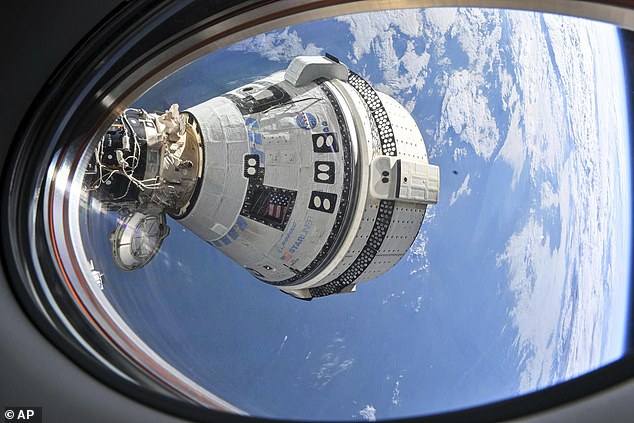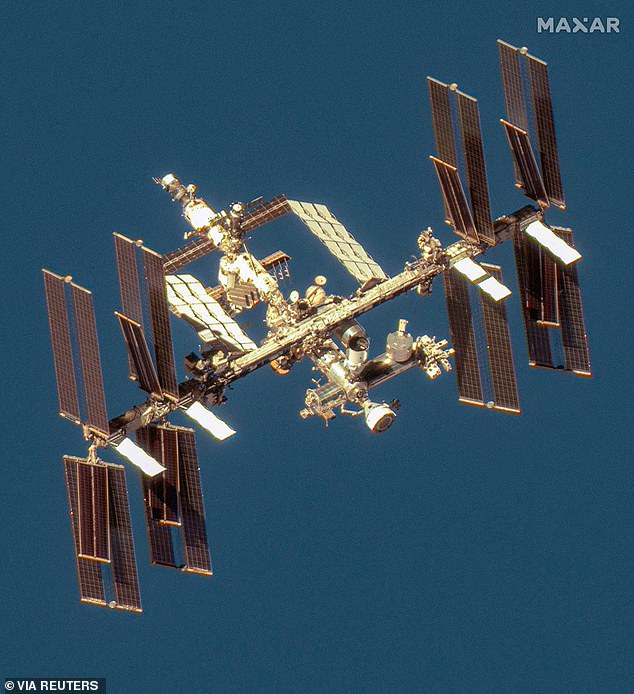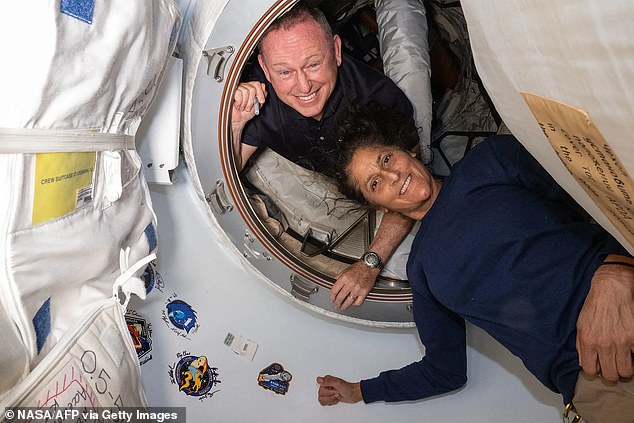NASA astronauts stranded by Boeing’s Starliner failure received some horrible news Wednesday about their mission back to Earth.
Suni Williams and Butch Wilmore, who have been trapped on the International Space Station (ISS) for more than two months, may not return to Earth until February 2025.
The US space agency unveiled a contingency plan that would launch a two-person crew on SpaceX’s Crew-9 mission in September and bring the crew home months later.
The announcement is another embarrassing blow for Boeing, which has been grappling with a series of problems affecting its commercial aircraft.
NASA has been promoting for weeks the idea that the capsule was safe enough for Suni Williams and Butch Wilmore to return from the International Space Station (ISS), despite the craft experiencing leaks and thruster problems.
Tuesday marked 60 days that the Starliner crew was in space, when the initial plan was for only eight days.
Thruster failures and helium leaks on Starliner prompted NASA and Boeing to keep the two astronauts in orbit longer out of fear that a return trip on the spacecraft could end in disaster.
During this time, teams were conducting tests to determine if the capsule could fly.
Last week, Boeing said it “remains confident in the Starliner spacecraft and its ability to safely return its crew.”
However, experts told DailyMail.com in June that NASA might be forced to launch a rescue mission, suggesting Elon Musk’s SpaceX would be chosen to do so.
Mike Gruntman, a professor of astronautics at the University of Southern California, told DailyMail.com that “it’s more likely that SpaceX will be able to provide an additional launch in the foreseeable future to bring back astronauts.”
“It is very unfortunate that Boeing’s Starliner, after so many flight delays, continues to face problems,” Gruntman continued.
For decades, Boeing was one of the most admired aerospace and defense companies. It is a true national tragedy.
Problems with Boeing’s commercial planes, including turbulence, mechanical issues and tail strikes, have cost the company at least $3 billion.
And NASA awarded Boeing a $4.2 billion contract to build Starliner as a taxi for astronauts to the ISS.
A meeting this week of NASA’s Commercial Crew Program, which oversees Starliner, ended with some officials disagreeing over a plan to accept Boeing’s test data and use Starliner to bring astronauts home.

The crew’s return mission has been delayed several times since its launch in June due to the craft experiencing leaks and thruster problems during its journey to the International Space Station (ISS).
“We didn’t conduct a survey that would lead to a conclusion,” said Commercial Crew Program chief Steve Stich.
“We heard from a lot of people who had concerns and the decision was not clear,” added Ken Bowersox, NASA’s chief of space operations.
While no decision has been made on whether to use Starliner or SpaceX’s Crew Dragon, NASA has been giving Boeing more time to do more testing and gather more data to build a better case for relying on Starliner.
NASA expects to make a decision sometime next week, officials said.
Testing by Boeing so far has shown that four of the Starliners failed in June because they overheated and shut down automatically, while other boosters reactivated during testing appeared weaker than normal because of some restriction in their fuel.
Ground tests conducted in late July at the White Sands Missile Range in New Mexico helped reveal that overheating of the boosters causes a Teflon seal to deform, clogging the booster tubes and weakening their thrust.

Tuesday marked 60 days for the Starliner crew in space, when the initial plan was for just eight days.
“I would say that increased the level of discomfort and not having a full understanding of the physics of what’s going on,” Stich said, describing why NASA now seems more willing to discuss a Crew Dragon contingency after previously downplaying such a prospect to reporters.
Starliner lifted off June 5 at 10:52 a.m. ET from Cape Canaveral Space Force Station in Florida with a leak that forced it to be canceled in May.
The crews detected a valve leaking helium and aborted the mission.
Engineers suspected the problem stemmed from a faulty rubber seal the size of a shirt button, and said that even if the leak worsens, it could be controlled in flight, and set the next launch for June 1.
However, Starliner was hit by another set of mishaps when the capsule was automatically stopped minutes before takeoff by a computer-controlled abort system.
The delay was prompted by computers on the Atlas V rocket’s launch pad coordinating the final moments before liftoff, but the Starliner capsule appeared to be in good shape, officials said.
The problems raised concerns among one NASA contractor, who urged the U.S. space agency to “redouble safety checks and reexamine safety protocols to ensure Starliner is safe before something catastrophic happens.”
ValveTech president Erin Faville expressed concern about the June 6 launch, telling DailyMail.com: “I’ve warned you about this. I’m choosing to let it play out.”
Starliner has found five flaws in its 28 maneuvering thrusters, five leaks of helium gas meant to pressurize those thrusters and a slow-moving thruster valve that indicated past unfixed problems since launch.
When Starliner came close to the space station for docking on June 6, five thruster failures prevented the spacecraft from making a close approach until Boeing came up with a fix.
Over the past few weeks, Boeing has been conducting thruster tests on the ground and in space to understand why five boosters failed before Starliner’s arrival at the space station.
All but one of them were functional again. Helium leaks were also detected in the capsule’s propulsion system.

